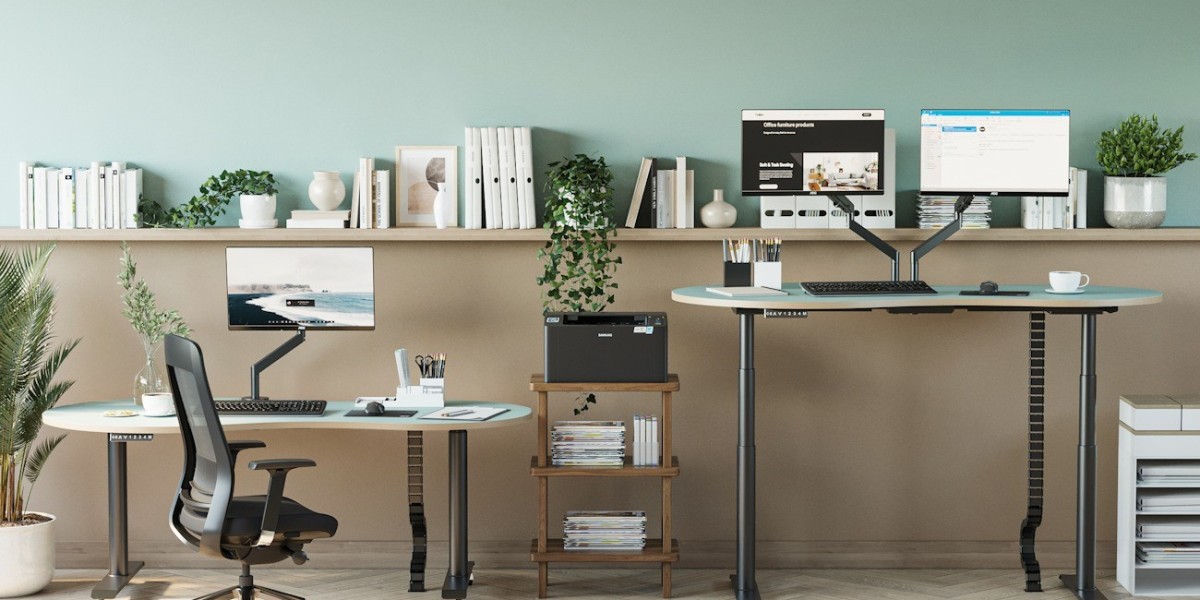The modern workplace is evolving rapidly, with an increased focus on health, comfort, and productivity. In the midst of advanced technology and innovative office layouts, the humble office table remains one of the most important elements in any professional setting. A well-designed office table does more than simply provide a surface to work on—it directly impacts posture, energy levels, and long-term well-being. By integrating ergonomic principles into its design, an office table can significantly enhance comfort, reduce the risk of physical strain, and contribute to a healthier work environment.
Understanding Ergonomics in Office Furniture
Ergonomics is the science of designing and arranging workspaces to fit the needs of the human body. In the context of office tables, this means creating a structure that supports natural body alignment, reduces strain on muscles and joints, and enables efficient workflow. The correct table height, adequate legroom, and a surface layout that minimizes excessive stretching or twisting are essential components of an ergonomic setup. A table designed without considering these principles can lead to discomfort, fatigue, and even chronic injuries over time.
The Role of Height and Adjustability
One of the key features of a well-designed office table is appropriate height. A table that is too high forces you to lift your shoulders unnaturally, while one that is too low causes you to hunch forward, leading to neck and back pain. Ideally, the surface should allow your elbows to remain at a comfortable 90-degree angle while typing or writing. Some modern designs incorporate adjustable height mechanisms, allowing users to switch between sitting and standing positions. This flexibility not only promotes better posture but also improves circulation and reduces the health risks associated with prolonged sitting.
Workspace Organization and Efficiency
An ergonomic office table is not just about physical comfort; it also plays a significant role in work efficiency. The table’s design should provide enough surface space to accommodate essential tools—such as a computer, documents, and stationery—without causing clutter. Well-placed cable management systems, storage drawers, and integrated shelves can further enhance organization. When everything is within easy reach, it reduces unnecessary movements that can strain muscles and waste valuable time during the workday.
Material and Build Quality
The choice of materials for an office table can influence both comfort and durability. Solid wood or high-quality engineered wood offers a stable and smooth surface, while steel or aluminum frames provide sturdy support. A well-built table does not wobble or shift during use, which is essential for maintaining a consistent posture. Smooth edges and rounded corners also add to safety, preventing accidental bumps or scrapes in a busy office environment. Investing in a table with a high-quality finish ensures that it remains both functional and aesthetically pleasing for years.
Health Benefits of a Properly Designed Office Table
The health implications of using the right office table are often underestimated. A poor desk setup can contribute to repetitive strain injuries, back problems, and even vision issues from improper monitor placement. In contrast, an ergonomically sound office table promotes natural alignment of the spine, reducing the likelihood of musculoskeletal disorders. By maintaining proper posture, you can also improve lung function and concentration levels, as the body is better able to circulate oxygen and nutrients.
Psychological Impact and Motivation
Beyond physical health, a well-designed office table can have a positive psychological effect. A workspace that feels comfortable, organized, and visually appealing can boost mood and motivation. Employees are more likely to feel engaged and productive when their environment supports their needs. In many modern workplaces, design is used not only as a functional necessity but also as a tool to inspire creativity and focus. The right office table can thus become a central element in building a positive work culture.
Considering the Office Table Price in Pakistan
While the ergonomic benefits are clear, budget considerations also play a role when selecting office furniture. The office table price in Pakistan varies greatly depending on materials, brand, and features. Adjustable height models or tables with premium finishes will naturally be priced higher than basic designs. However, it is important to view this purchase as a long-term investment in health and productivity. Spending slightly more on a well-designed, durable table can save significant costs in the future by reducing absenteeism due to discomfort or injury and by extending the furniture’s usable life.
Adapting to Remote and Hybrid Work
With the rise of remote and hybrid work models, the importance of having an ergonomic office table is no longer limited to corporate offices. Many professionals are now setting up home workstations, where space constraints can make furniture selection even more critical. Compact ergonomic tables with smart storage solutions allow for efficient use of smaller areas while still supporting healthy posture. The adaptability of a table—whether it fits seamlessly into a home office or a shared workspace—can make all the difference in maintaining consistent comfort and productivity.
Environmental and Sustainability Considerations
An often-overlooked factor in selecting an office table is its environmental impact. Sustainable materials, such as responsibly sourced wood or recycled metal, contribute to eco-friendly practices. Some manufacturers also use low-VOC finishes, which help maintain indoor air quality. Choosing environmentally responsible furniture not only benefits the planet but can also align with a company’s corporate social responsibility goals. This adds another layer of value to the investment in a high-quality, ergonomic table.
Long-Term Value of Ergonomic Design
The long-term value of a well-designed office table goes far beyond initial comfort. Over the years, small improvements in posture and reduced strain add up to significant health benefits. Employees experience fewer aches and pains, productivity levels remain steady, and morale is consistently higher. Moreover, high-quality ergonomic tables tend to have longer lifespans, reducing the frequency of replacements and associated costs. From both a health and financial standpoint, investing in ergonomics is a decision that yields measurable returns.
Final Thoughts
The office table is more than just a piece of furniture—it is the foundation of a productive and healthy workspace. A well-designed, ergonomic table supports proper posture, enhances efficiency, and contributes to both physical and mental well-being. Whether for a corporate office or a home workspace, the right table can transform the way you work, reducing the risk of injury and promoting long-term health. Considering both functionality and budget, especially in relation to local market prices, ensures that you make a choice that balances comfort, quality, and value. In the modern work environment, where we spend countless hours at our desks, an investment in a well-designed office table is truly an investment in your future.








